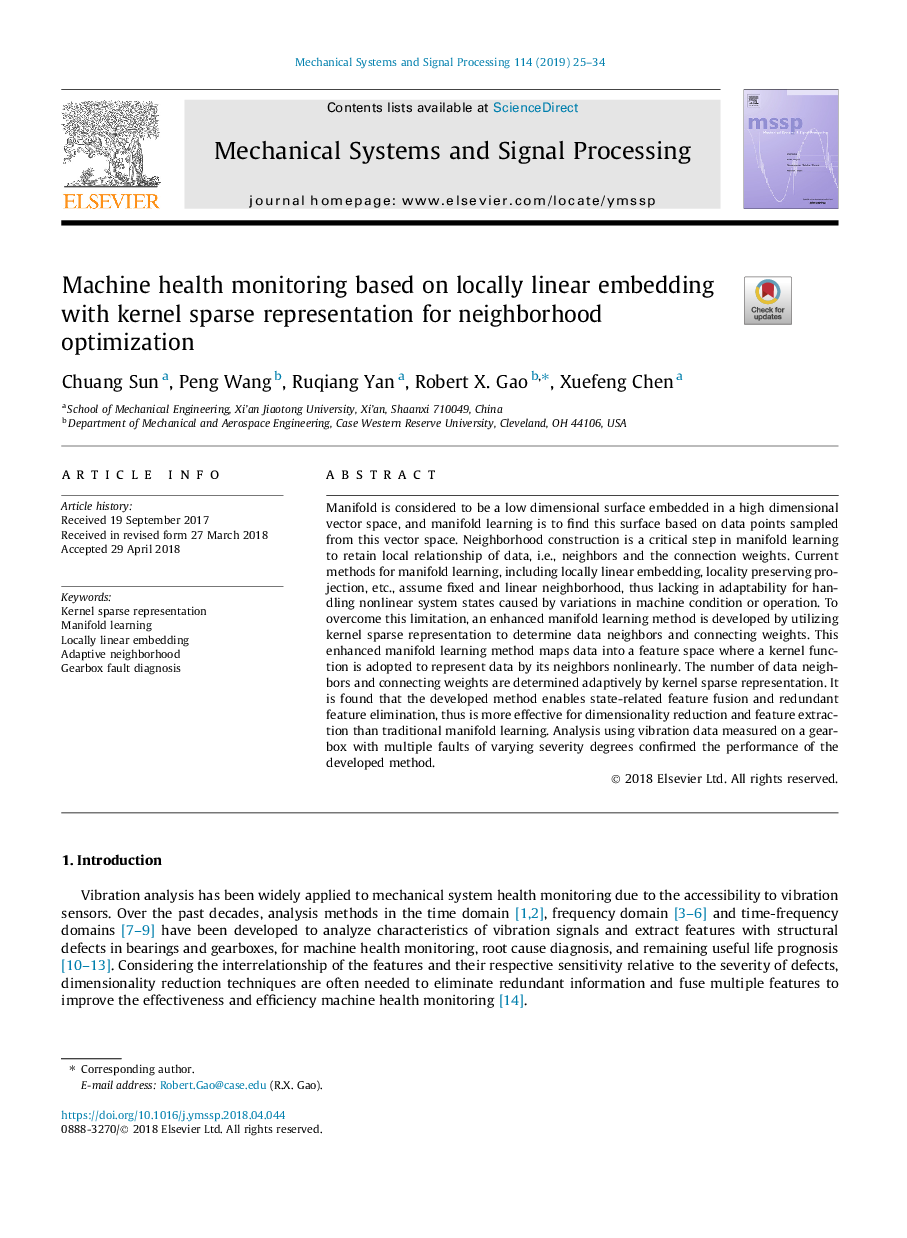| Article ID | Journal | Published Year | Pages | File Type |
|---|---|---|---|---|
| 6953585 | Mechanical Systems and Signal Processing | 2019 | 10 Pages |
Abstract
Manifold is considered to be a low dimensional surface embedded in a high dimensional vector space, and manifold learning is to find this surface based on data points sampled from this vector space. Neighborhood construction is a critical step in manifold learning to retain local relationship of data, i.e., neighbors and the connection weights. Current methods for manifold learning, including locally linear embedding, locality preserving projection, etc., assume fixed and linear neighborhood, thus lacking in adaptability for handling nonlinear system states caused by variations in machine condition or operation. To overcome this limitation, an enhanced manifold learning method is developed by utilizing kernel sparse representation to determine data neighbors and connecting weights. This enhanced manifold learning method maps data into a feature space where a kernel function is adopted to represent data by its neighbors nonlinearly. The number of data neighbors and connecting weights are determined adaptively by kernel sparse representation. It is found that the developed method enables state-related feature fusion and redundant feature elimination, thus is more effective for dimensionality reduction and feature extraction than traditional manifold learning. Analysis using vibration data measured on a gearbox with multiple faults of varying severity degrees confirmed the performance of the developed method.
Related Topics
Physical Sciences and Engineering
Computer Science
Signal Processing
Authors
Chuang Sun, Peng Wang, Ruqiang Yan, Robert X. Gao, Xuefeng Chen,
